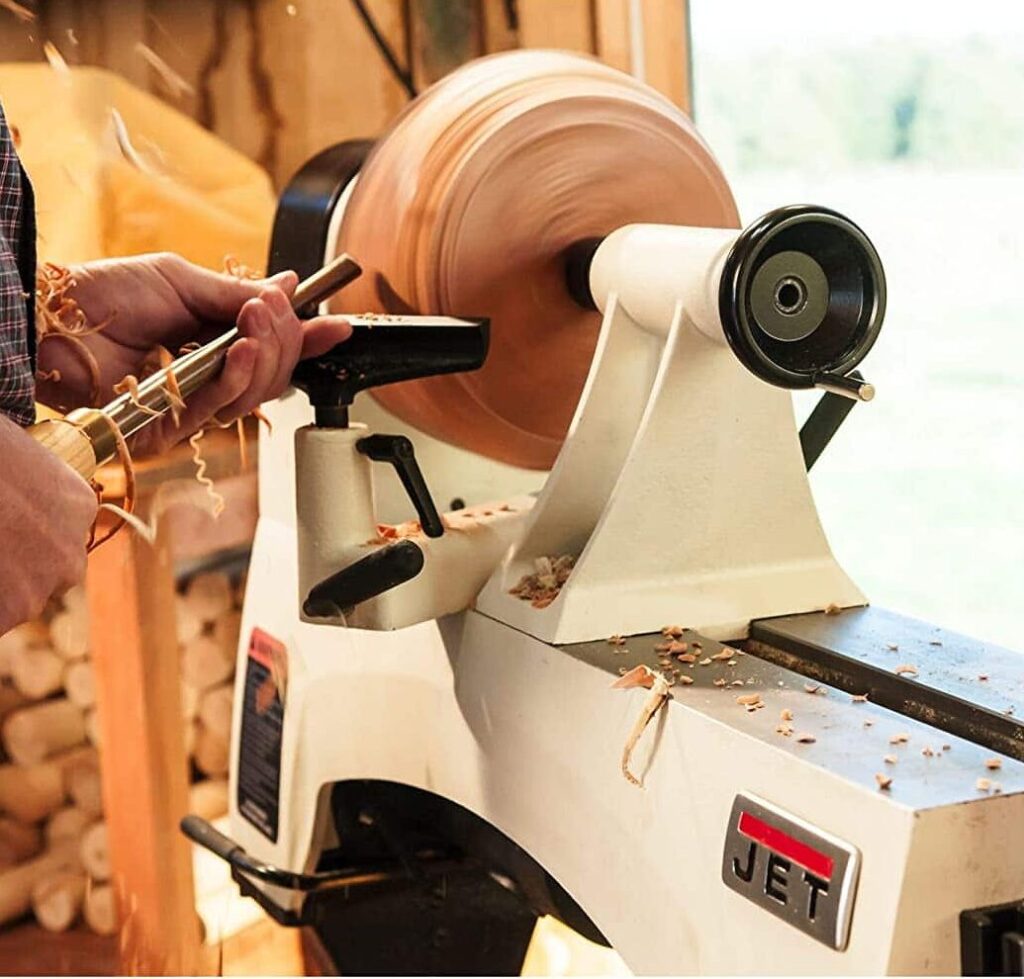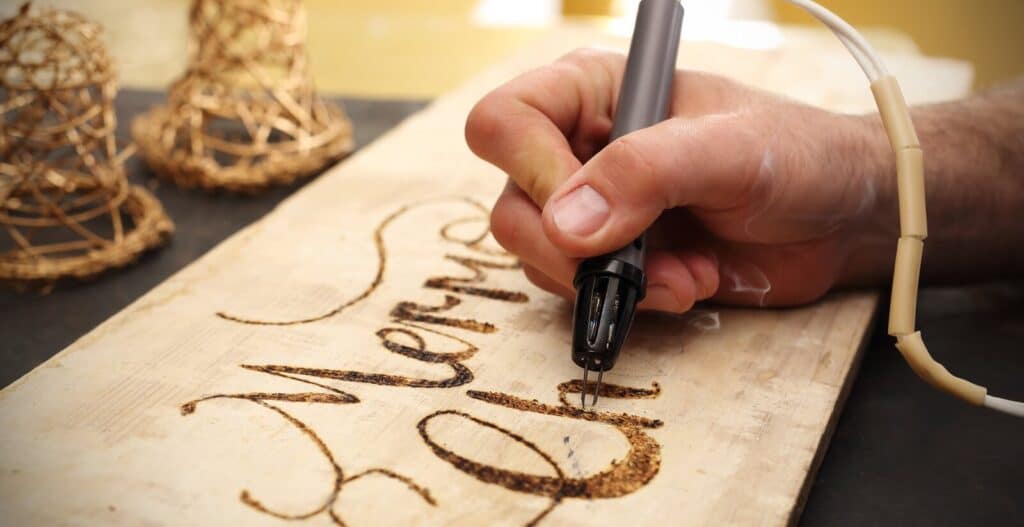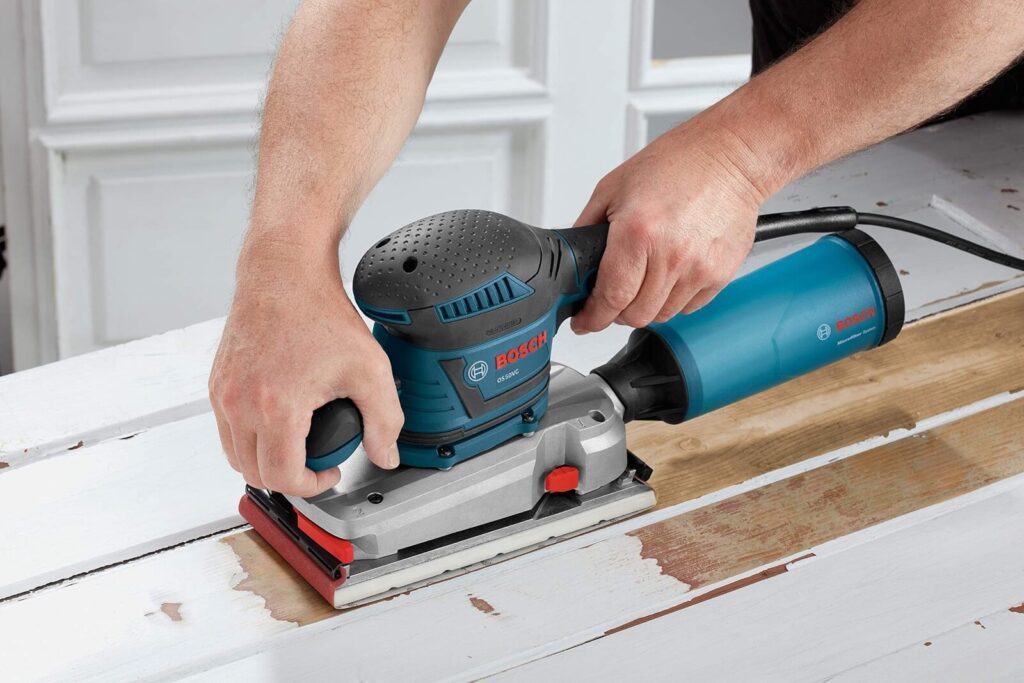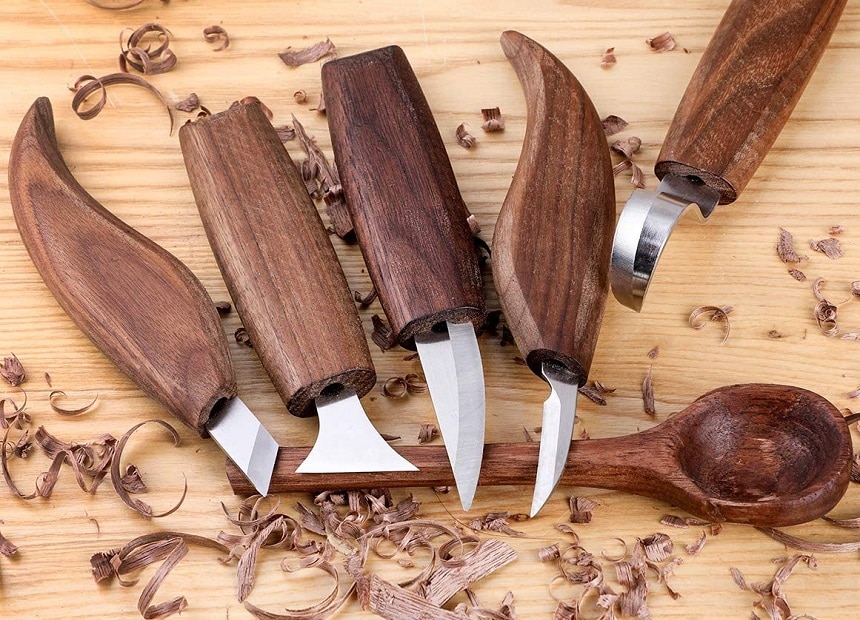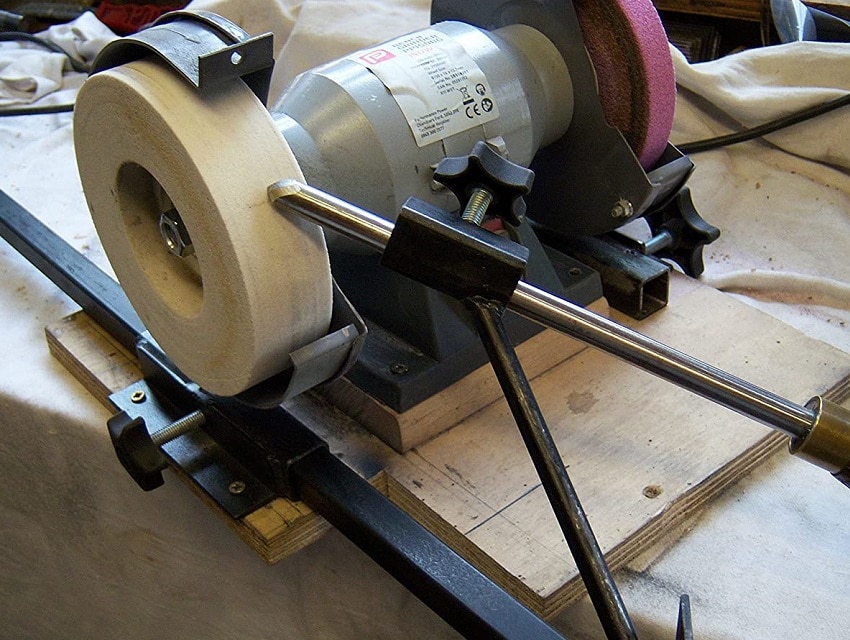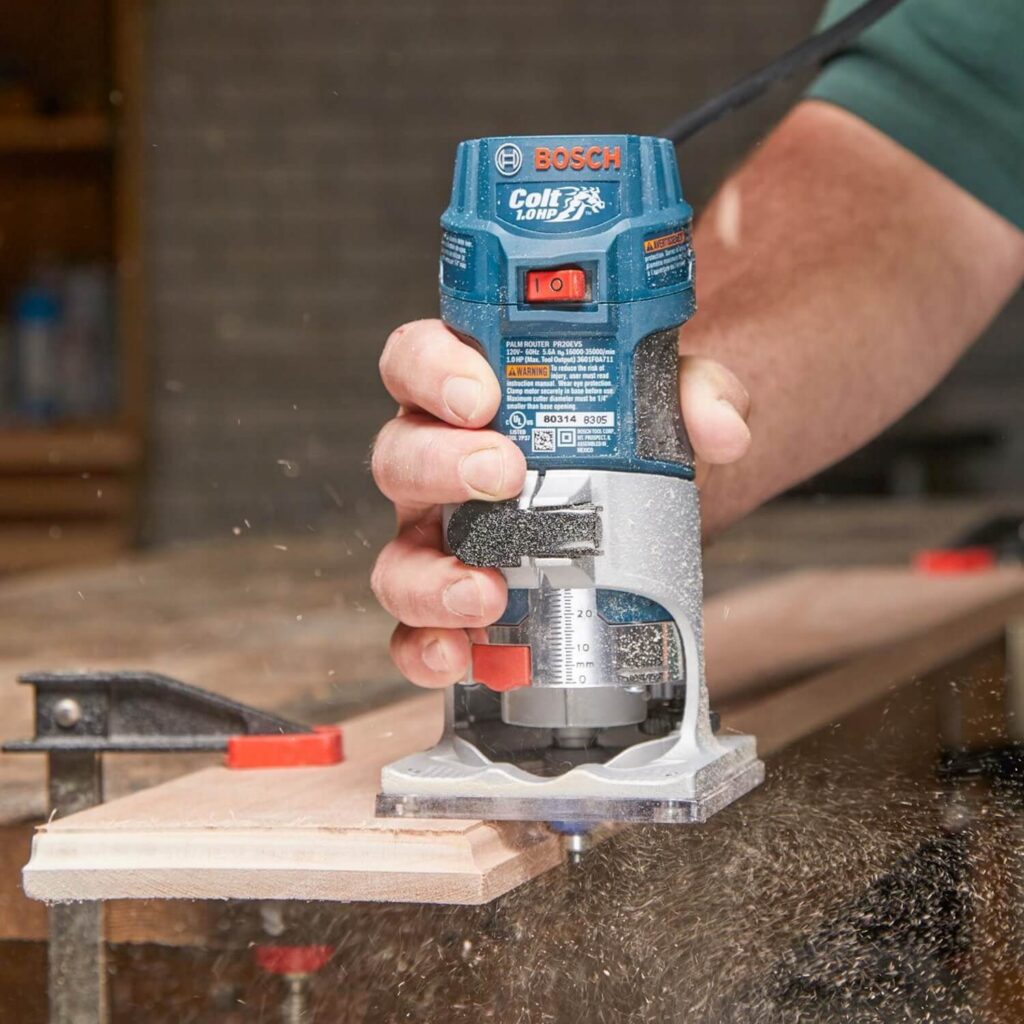

A fun way to get creative is pyrography. Also known as wood burning, this can be done by using pyrography burning tools to burn your creative designs onto a piece of wood. However, what type of wood you use makes a big difference to the outcome of your artwork.
With so many different types of wood to pick from, you may be left wondering which one is the best wood for wood burning. Each wood type offers its own unique features that either transform your work into a masterpiece or simply makes it difficult for you to get the best results.
To make it easier for you, we’re sharing some of the best wood for pyrography projects and what makes them good for this type of art. Plus, we’ll talk you through the process of prepping your woods for wood burning.
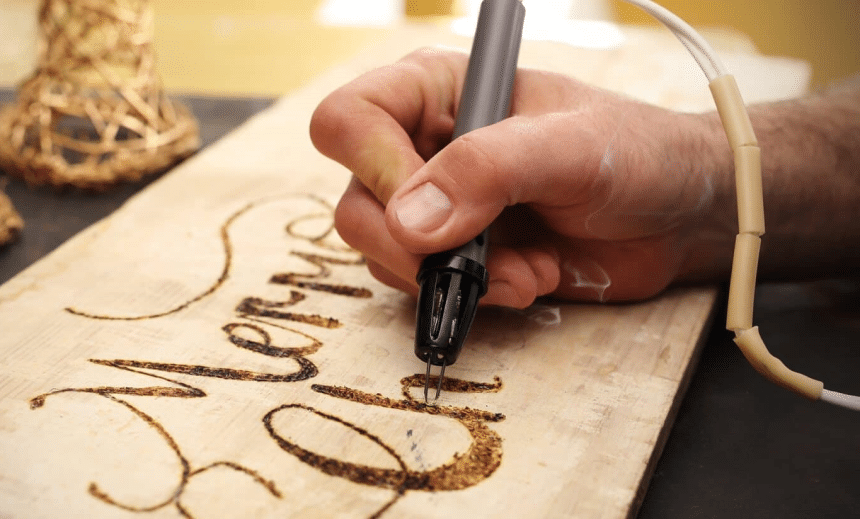
When picking a wood type for your project, you want to take into consideration the following aspects:
Being aware of these features will make it easier for you when buying wood for your pyrography artwork.
Pyrography Trusted Source Pyrography - Wikipedia Pyrography or pyrogravure is the free handed art of decorating wood or other materials with burn marks resulting from the controlled application of a heated object such as a poker. It is also known as pokerwork or wood burning. en.wikipedia.org is an ancient artform and over time some wood types have become more popular than others. Read on to find out which 12 best wood for wood burning art is being used by pyrography artists.
Pine is one of the most commonly used wood burning wood types. You can pick between yellow or white pine but know that each type is distinctly different. Yellow and white pine is inexpensive and easy to source both online and at hobby craft stores.
Yellow pine, while softwood, is a harder wood to work with when burning designs. Its coloring makes it less suitable for lighter artwork. The grains do vary and many artists do complain it’s not easy to burn a design that requires intricate details and patterns. If your project entails engraving letters or numbers, then yellow pine is a good wood type to use.
On the other hand, white pine is a softer wood to work with and it’s easier to burn designs. It gives you a cleaner and smoother burn and is lighter in color. This is a very popular wood type for pyrography but be aware that natural pine does emit more sap than other wood types.
If you want to use a prepared piece of pine for your project, consider using Wallow Hollow Pine Oval Plaque. Using a piece of wood that’s been prepared in advance is especially useful for beginners to pyrography.
Oak can be a challenging wood to work with but this doesn’t mean you can’t experiment with it. Oak is a hardwood and has a darker color. It’s one of the more expensive woods to use for wood burning.
The wood grains are heavier and most times, uneven. Oak also has sap that bubbles out when burned and the result can be messy. You can find oak finish pieces cut into plaque shapes such as the Edward & Co. Oak Finish Blank Wood Plaque.
This oak product has a clean finish making it a bit easier for wood burning art projects. It’s compatible for laser engraving so if this is your style of pyrography you may enjoy working with oak.
Beech wood is a very popular wood type used by wood burning artists. It’s more affordable and lighter in color. It is a hardwood but this shouldn’t put you off using it for your pyrography projects.
The beech wood does have darker grains and when burnt, sap does ooze out. If this bothers you, you could opt for the plywood option which has no resin in it. If not properly prepped, this wood type may splinter during use.
When looking for beech wood, look for pieces that have a smoother finish such as the Artibetter Hexagon Wood Shaped Beech Wood. These prepared pieces are made for all crafts projects including pyrography.
While a beautiful wood type, cherry wood is not recommended for lighter art designs. However, many artists will use it because of its stunning, rich dark color and if you’re creative enough you can get some good results.
The colors may vary with different cuts so be aware of this when purchasing cherry wood for your wood burning artwork. It has no resin which is ideal for pyrography work and it is a hardwood. The grain is smoother, making it easy to work with when you apply the right heat.
Look out for cherry wood that has a good finish to it such as the Woodchucks Wood Thin Brazilian Cherry Wood Boards. This strong wood has no knots and is sanded on both sides giving you a smooth surface to work with if you’re willing to work with the darker color.
If you’re a beginner to pyrography then you can’t go wrong with balsa wood. This is a softwood and light in color. You will need to be careful of sinking into the wood when working with it because it’s so soft. This is a good wood for practicing your pyrography techniques.
Balsa wood has minimal grains and no sap or resin. It’s not an easy wood to source but you may find it in some modelling shops or online.
You could try using Bright Creations Thick Balsa Wood for DIY Models. These planks are smooth and thick enough for pyrography projects. Their coloring is very light so your artwork will stand out nicely.
Plywood can be made from various wood types and may be either softwood or hardwood. It’s an easily sourced wood type and most affordable for pyrography artists. Plywood Trusted Source Plywood - Wikipedia Plywood is a material manufactured from thin layers or “plies” of wood veneer that are glued together with adjacent layers having their wood grain rotated up to 90 degrees to one another. It is an engineered wood from the family of manufactured boards which include medium-density fibreboard (MDF), oriented strand board (OSB) and particle board (chipboard). en.wikipedia.org can have a slivered texture. This can make it a bit difficult to work with when burning. Sanding beforehand could give you a smoother texture for burning.
Birch plywood is one of the most popular wood types for burning. The Baltic Birch Plywood from Anderson Plywood is a popular option and it comes in thick, workable planks.
These planks have been sanded for a more uniform surface which is ideal for wood burning projects. They’re also more durable and less likely to splinter when you’re creating your designs.
Talk to any artist who does pyrography and they’ll vote for basswood for wood burning. It’s soft and has minimal grains. It’s light in coloring and easy to burn. Basswood is also an inexpensive wood and can be found in various sizes both online and at wood stores.
You can use most pyrography techniques with this wood type. Your designs will contrast nicely with the natural basswood color. This wood has no sap oozing out when burned.
The Newbested Unfinished Basswood sheets do have smooth surfaces making it perfect for most pyrography projects. The grains are barely noticeable and the edges have been rounded off to give each sheet a softer appearance.
Maple wood is another popular wood type for pyrographers. It’s light and has minimal graining. It’s a harder wood so more resistant to gouging and is found in most wood stores and online. Maple is an expensive wood to work with so if you’re starting out in wood burning this may not be the cheapest wood to practice on.
While intended for guitar head replacements, the high quality VGEBY1 Guitar Head Replacement Maple Wood Veneer works well for any wood burning artwork project. The surface of this wood is smooth and elegant while still being durable.
A lightweight hardwood, Pacific albus is similar to balsa wood. This wood type has minimal grains and offers a smoother texture to work with when burning. Because of its softer nature, it can be easily gouged. If you’re learning new pyrography techniques you could use this wood to practice as it’s a cheaper alternative.
Pacific albus is not an easy wood type to find which is why it’s not often used by pyrography artists.
Poplar is a great wood for creating wood burning designs with finer details. It’s an easy wood to burn and accessible in most stores. You can also order it in custom sizes. The grains are consistent and soft.
Poplar is also lighter in color so your designs will stand out plus the wood holds the stains well so you don’t need to worry about fading over time. It’s a more expensive option to pine but compared to the other wood types mentioned here, it’s a cheaper wood to practice on.
You could experiment with the JMP Oval Rosette Poplar Wood with its smoother surface and beautiful coloring.
Alder is an easy wood to find and it burns easily. It’s a hardwood with no resin and some grain patterns. The coloring is darker so be aware of this when deciding on your design. It’s a cheaper wood so a great type for beginners and when you’re learning new wood burning techniques.
White’s Woods Alder set gives you four planks to work with and have been sanded on both sides. This gives you a smoother surface with no knots for easy burning.
Birch wood is often used by wood burning artists. It has a consistent grain feature and is lighter in color. It’s very similar to basswood and burns well. However, it’s known to splinter so be careful not to burn deep with this wood type.
Birch often comes in plywood and Woodpeckers Baltic Birch Plywood is a good one to work with when wood burning. The longitudinal grain pattern offers an attractive look while the smooth surface makes it easy to work with.
Before you dive in and start burning your design on a piece of wood, you need to prep it. To keep your clothing protected during prepping look for one of the best woodworking aprons used by woodworkers.
A smooth surface always gives you better results so prep your wood by sanding it. A rougher grit sandpaper (60 grit) should be used first to remove any splinters and roughness. You can finish off by rubbing with a finer grit sandpaper. Always sand with the grain and use a wet rag to wipe away the sawdust.
Dampen the wood with a wet sponge. You don’t want to soak the wood in water though. Let it dry out completely before sanding it one more time with 220 grit sandpaper. Run your hands over the surface to gauge the smoothness and to check all roughness has been removed.
If you want to shape your wood pieces, consider getting some of the best woodturning tools for this job. You’ll be able to create different shapes easily and efficiently.
Pyrography is a wonderful hobby that can be used to showcase your artistic flair. Working with different wood types gives you the scope to get creative with your designs when wood burning. If you’re new to wood burning, look out for the wood types that are easy for beginners such as poplar and alder.
The most popular wood types favored by wood burning artists are your basswood, pine, and beech woods. But this doesn’t limit you to experimenting with the other popular wood types mentioned in this article.
Some of the best wood for wood burning can give you hours of creativity while resulting in beautiful artwork. So, if you’re looking for a new way to display your creative skills then what are you waiting for? Discover pyrography and get creative!
